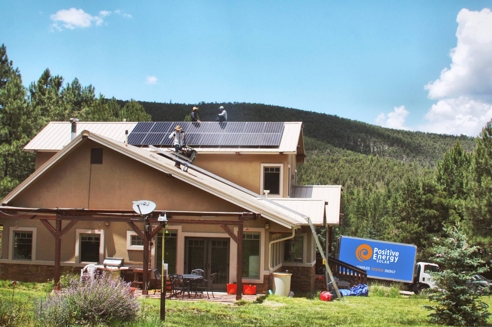By now you’ve probably heard about the Department of Commerce’s (DOC) investigation into whether Chinese solar manufacturers had been improperly funneling parts through Cambodia, Thailand, Malaysia, and Vietnam; four countries that supply approximately 80% of the PV cells and modules used here in the United States. These solar tariffs, along with supply chain constraints and growing demand for solar energy projects have bucked the long-standing trend of decreasing solar energy costs and caused countless solar projects to grind to a halt. But, there’s good news on the horizon.
The Biden administration has recently announced a 24-month tariff exemption on solar modules manufactured in the above mentioned countries while also invoking the Defense Production Act as a means to accelerate American manufacturing with the goal of boosting domestic solar and clean energy technology manufacturing, strengthening the power grid, creating greater energy independence, and tackling climate change.
Where does U.S solar manufacturing stand today?
Most U.S. solar jobs are in building and design, not manufacturing. As of 2022, the U.S. solar industry employs 230,000 plus workers, just 13% of whom are employed in solar panel manufacturing. Most of the solar manufacturing process (even overseas) is automated by machines. The rest of the U.S. solar workforce is comprised of solar installers, design, engineering, project management, operations, administration, and other important areas critical to successful solar energy deployment.
Increasing U.S. manufactured solar panels may not add a significant portion of new jobs directly, but it could still provide major benefits by reducing volatility and reliance on foreign energy production and bolstering the production needs necessary for a carbon-free grid. Beyond the detrimental environmental impacts of fossil fuels, they are a finite resource and it’s inevitable that they will need to be replaced with other energy resources; the sooner we begin building the infrastructure for this transition at home, the better. Our domestic manufacturing industry is nowhere close to what is needed to deploy solar energy at the scale we need, but passing legislation that bolsters the solar industry could remedy this issue.
A prime example is the Solar Energy Manufacturing for America Act. This bill would incentivize domestic production for producing solar energy technologies and provide tax credits for solar manufacturing at each stage of the supply chain. This would create tens of thousands of jobs and help the U.S. get on its way to becoming a leader in solar technology manufacturing.
There is also the America COMPETES Act of 2022 (America Creating Opportunities for Manufacturing, Pre-Eminence in Technology, and Economic Strength) which, if passed, authorizes $3 billion to fund the development of a strong U.S. solar manufacturing supply chain. This would include the manufacturing of technology needed at every stage of production. Every year through 2026, the Department of Energy (DOE) would be authorized to distribute $600 million dollars in grants and direct loans for the construction of new solar manufacturing facilities along with the expanding and upgrading of existing facilities.
Will Solar Panels Get Cheaper?
The cost of solar panels saw an exponential decrease over the last two decades thanks in part to economies of scale & manufacturing efficiencies, among other things. It’s unlikely that we’ll continue to see such dramatic decreases in price (solar costs have increased during the pandemic due to increased demand at a time of global supply constraints, supply shortages, and inflation at an all-time high), but we could expect to see some decreases in price as domestic manufacturing ramps up and volatility subsides. The Solar Energy Manufacturing for America Act and the America COMPETES Act of 2022 would drive the U.S. solar industry to expand its manufacturing capacity and should lower the cost of solar here at home, keeping more money in your pocket.
Until the aforementioned legislation passes into law, suspension of additional solar tariffs can and will likely benefit solar energy adopters with lowered costs, as any new tariffs could be made retroactive, meaning solar installers would have to increase prices to cover the cost of the tariff. The good news is that with the tariffs temporarily lifted, solar companies can get projects back on track and customers can look forward to their systems being installed in as timely a manner as possible without the concern of project delays from the uncertainty created by the investigation.
The remedy truly lies in passing legislation that supports the manufacturing needed for our industry to thrive on American soil. The America COMPETES Act of 2022 would alleviate overall supply chain disruptions by investing $45 billion to strengthen American supply chains and serve as a step toward resolving inflation.
Should I Wait to Go Solar?
If you’ve been considering having solar panels installed for your home or business, there’s no reason to put things off any longer, in fact, waiting could be a bad thing. Beyond the obvious need for climate action, waiting to go solar could mean you’ll miss out on the current Federal & New Mexico Solar Tax Credits which help cover up to 36% of your solar system costs. The longer you wait, the more you’ll continue to pay on electric bills as well. If you’re considering waiting because you want American-manufactured solar panels, those are available today as well! Positive Energy has several solar panel offerings to meet your needs.
Interested in learning more about New Mexico solar programs and options? Get started with a free consultation and evaluation.


